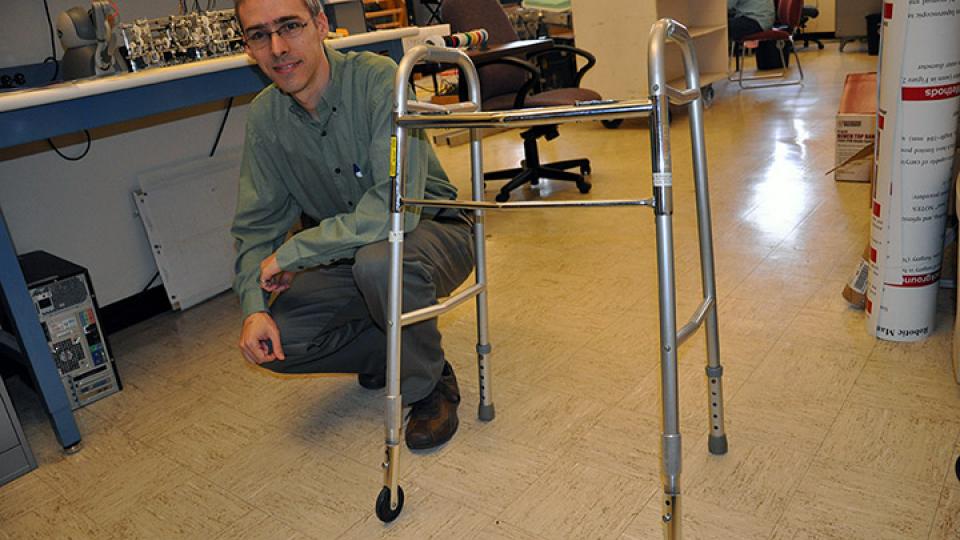
An engineering concept designed at UNL was ranked among the top three finishers at the annual Design of Medical Devices Conference "Three in Five" competition.
Carl Nelson, associate professor of mechanical and materials engineering, presented the UNL concept, which is designed to increase the safety of traditional assistive walkers. The presentation was titled "Mobility-Enhancing Fall-Prevention Device for Physical Rehabilitation."
The adaptation — which evolved with the help of four UNL engineering graduates — adds a spring-loaded, plunger-type mechanism inside the legs of a walker. The mechanism locks the wheeled footing of the walker, adding stability when weight is applied.
The device is also cost effective, adding about $10 to the total cost of a walker.
Nelson said the design was aided by a five-year, $125,000 National Science Foundation grant. The award pairs UNL undergraduate mechanical engineering design teams with disabled persons or communities as clients each year. The walker adaptation is one of several student projects benefiting from the grant for improving designs of medically assistive devices.
The walker design evolved with the help of 2013 engineering graduates Manu Vengeta Rao, Kathirgugan Kathirasen, Dingwei Zhang and Liran Kong. The students worked on the concept while in a senior-level design course led by Nelson.
Through the senior design course, Nelson connects student teams with Madonna Rehabilitation Hospital in Lincoln to identify clients that would benefit from design specialized devices. Judy Burnfield, director of UNL’s Athletic Performance Lab and director of the Institute for Rehabilitation Science and Engineering at Madonna, has provided valuable feedback for the students.
Nelson said the students perform needs assessment, brainstorm and evaluate solution concepts, and bring their designs to fruition through analysis, prototyping, and testing. For some students, the prototyping work may be their first experience in specifying and producing components, with assistance from the college’s Engineering and Scientific Research Support Facility, which includes a staffed machining shop.
A further phase emphasizes entrepreneurship and dissemination of the designs.
For the walker adaptation, Nelson said project participants learned that 10 million Americans use walkers or canes, and 47,000 elderly Americans (1 in 200 users) experience falls each year while using these devices.
“It’s a huge unmet need,” Nelson said.
Nelson said he believes new assistive technologies are being created through this grant-funded process to advance engineering knowledge. He said a provisional patent has been filed for the walker adaptation, and publications with student participant authorship have also resulted.
The Design of Medical Devices Conference was April 7-10 in Minneapolis. It is widely known as the largest medical device conference in the world.
Written by: Carole Wilbeck, Engineering